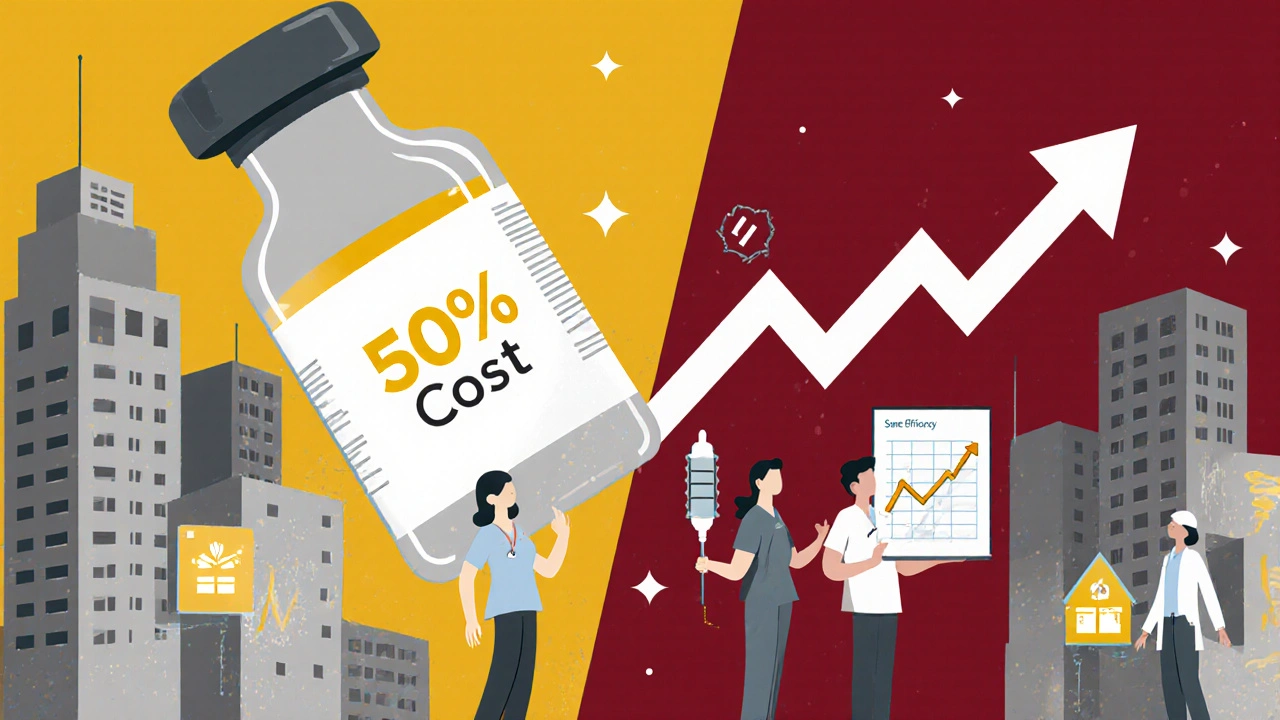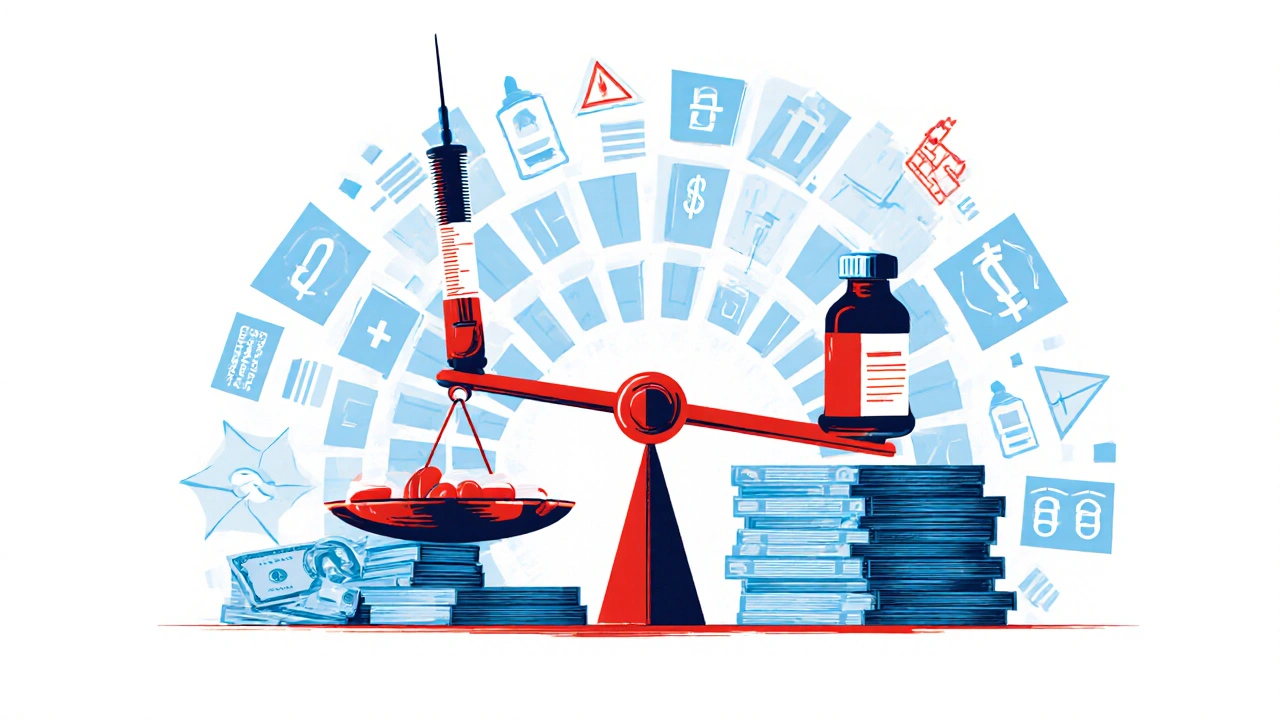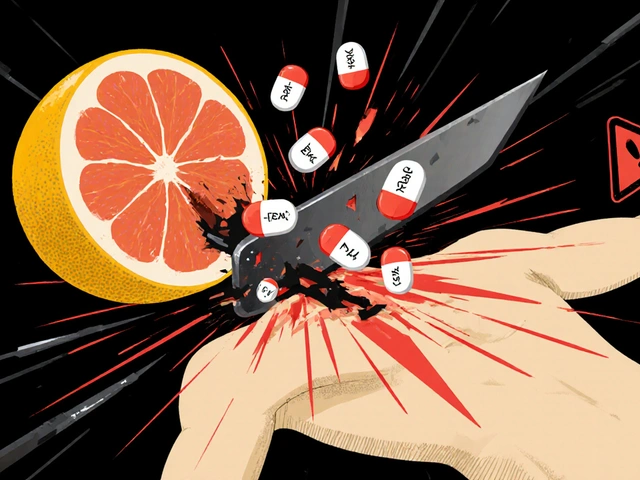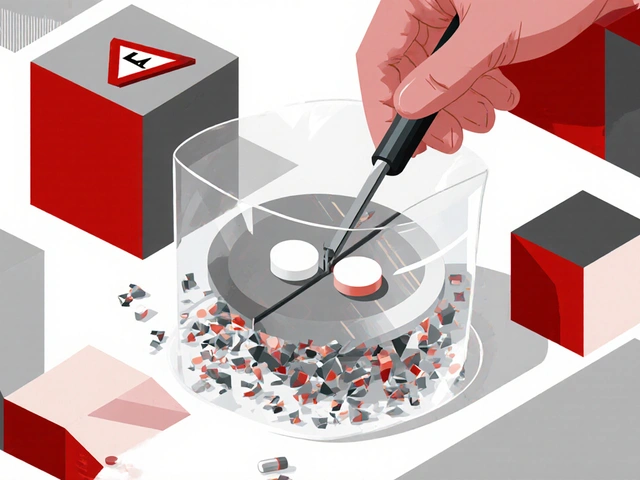Specialty medications and injectables are changing how we treat serious illnesses - but they’re also breaking budgets. These drugs, used for conditions like cancer, rheumatoid arthritis, and multiple sclerosis, make up just 2% of all prescriptions but account for half of all pharmacy spending. In 2023, the average monthly cost for one specialty drug was over $1,000. For employers, that’s $34.50 per employee, per month - and it’s only going up. If you’re paying for these drugs - whether as an employer, insurer, or patient - you’re not alone in feeling the pinch.
Start with Formulary Management
One of the most effective ways to cut costs is by managing which drugs are covered and how. Formulary management means setting rules: only approve a drug if it’s medically necessary, require patients to try cheaper alternatives first (step therapy), or limit how much you can get at one time (quantity limits). For example, Excellus BlueCross BlueShield saved $13.64 per member per month just by tightening prior authorization rules on GLP-1 weight loss drugs. That’s not a small number - it adds up fast across thousands of members.But here’s the catch: if you make the rules too strict, people can’t get the care they need. The key is balance. Use clinical guidelines - not just cost - to decide what’s allowed. Have a Pharmacy and Therapeutics (P&T) committee review drugs regularly. This team should include pharmacists, doctors, and sometimes even patients. Their job? Make sure the rules help people get better, not just save money.
Narrow Your Pharmacy Network
Not all pharmacies are created equal when it comes to specialty drugs. Many plans let patients use any pharmacy - but that’s expensive. By limiting coverage to a small group of specialty pharmacies that agree to lower prices, you can save 10-15% on drug costs. CarelonRx found that exclusive networks cut spending by $1.37 per member per month across 200 employers - totaling $35 million in annual savings.Some patients hate switching pharmacies. That’s normal. But the right communication helps. Tell them why the change is happening. Show them the new pharmacy offers 24/7 clinical support, free delivery, and medication coaching. In one study, patients using preferred networks rated their support services at 8.7 out of 10 - compared to 7.2 for non-preferred ones. When people feel cared for, they’re more likely to stick with the plan.
Switch to Biosimilars When You Can
Biosimilars are the copycat version of biologic drugs - the most expensive type of specialty medication. They work the same way, have the same safety profile, and cost about half as much. The FDA has approved 42 biosimilars as of late 2023, but adoption is still under 30% in most areas. Why? Doctors don’t always know about them. Patients are nervous. Pharmacies don’t push them.Fixing this takes education. Hospitals that ran biosimilar transition programs saw 20-30% cost drops with no drop in patient outcomes. Start by identifying high-cost biologics in your plan - like Humira or Enbrel - and ask your pharmacy benefit manager (PBM) for biosimilar alternatives. Then, train prescribers. Give them data. Show them real patient stories. When a rheumatologist sees that switching to a biosimilar saved a patient $600 a month without side effects, they’re more likely to make the change.
Move Injections Out of Hospitals
Many specialty injectables are given in hospital outpatient clinics - where the price tag is sky-high. But 91% of the time, these infusions don’t need to happen in a hospital. They can be done safely in a doctor’s office, a free-standing infusion center, or even at home with a nurse.Quantum Health found that shifting just 220 specialty drugs from hospital settings to lower-cost locations saved 48% per dose. That’s huge. One drug, for example, cost $1,800 in a hospital but only $940 in a clinic. Prime Therapeutics reported savings of 40-50% across similar transitions.
To make this work, you need to change the payment structure. Hospitals charge more because they’re reimbursed more. If you pay the same rate whether the drug is given in a clinic or a hospital, providers will naturally choose the cheaper option. Create fair fee schedules. Reward lower-cost settings. Make it easy for patients to get care where it’s most affordable.

Use Value-Based Contracts
What if the drug company only gets paid if the drug actually works? That’s the idea behind value-based contracting. Instead of paying a flat price, you tie payment to outcomes. For example, if a multiple sclerosis drug doesn’t reduce relapses after six months, the manufacturer gives you a refund.Prime Therapeutics saw a 45% increase in these types of contracts in 2023. It’s not easy to set up - you need data, clear definitions of success, and legal agreements. But the payoff is real. Dr. Peter Bach from Memorial Sloan Kettering says this is the most promising way to align drug prices with real-world results. And with specialty drug costs rising 10-12% a year, we can’t keep paying for drugs that don’t deliver.
Maximize Financial Assistance Programs
Many drug manufacturers offer copay assistance cards - coupons that lower what patients pay out of pocket. But here’s the trick: if those coupons count toward your deductible, they don’t help you save money long-term. That’s where copay maximizers come in.These programs let patients use manufacturer coupons without them counting toward their deductible. That means the patient pays $0 upfront, and the plan pays the rest - but only after the deductible is met. This reduces the employer’s total cost because the manufacturer covers more of the bill. CarelonRx found that these programs can cut employer spending by 5-8% annually.
Just make sure the program is structured correctly. Work with your PBM to ensure the coupons are applied after the deductible, not before. And always check if the patient qualifies - these programs are meant for people who truly need help, not those who can afford full price.
Track Data and Act Fast
You can’t manage what you don’t measure. The best cost-reduction programs use real-time data to spot problems early. Is one doctor prescribing a $5,000 drug to 30 patients? Is a patient refilling a high-cost injectable every 10 days instead of every 30? That’s a red flag.Systems that integrate with electronic health records and pharmacy databases can flag outliers automatically. Quantum Health found that programs with this capability reduced wasteful spending by 15-20%. Set up alerts for high-cost prescriptions. Review them weekly. Talk to the prescriber. Ask: Is this really necessary? Are there cheaper options?
This isn’t about being suspicious. It’s about being smart. Most doctors want to do the right thing. They just need the right data to make better choices.

What Doesn’t Work
Some ideas sound good but don’t deliver. Capping out-of-pocket costs - like limiting patients to $250 a month - sounds fair. But it doesn’t lower total spending. It just shifts the cost from the patient to the plan. You’re still paying the same high price.Also, don’t just blame the drug companies. Yes, prices are high. But the system itself is broken. Overuse, poor coordination, and lack of transparency drive more cost than the sticker price alone. Fixing the system - not just fighting the manufacturer - is the real solution.
What’s Coming Next
The Inflation Reduction Act is starting to change things. Medicare can now negotiate prices for some drugs - and experts predict private insurers will follow. The FDA is speeding up biosimilar approvals through Project BioSet. By 2026, experts believe shifting specialty drugs from medical benefits to pharmacy benefits could cut costs by 60-70% for most drugs.Bottom line: The old way of paying for specialty medications is no longer sustainable. But there’s a better path. Combine formulary rules, narrow networks, biosimilars, smarter administration, value-based contracts, and real-time data. Don’t pick one. Use them all.
Employers who use at least three of these strategies are already seeing savings. Those who use five or more are cutting annual spending growth from 10-12% down to 5-7%. That’s not just a win for budgets. It’s a win for patients who can actually afford their meds.
Why are specialty medications so expensive?
Specialty medications are expensive because they treat complex, chronic conditions using advanced biotechnology. Developing these drugs takes over a decade and billions in research. Many are biologics - made from living cells - which are harder and costlier to produce than traditional pills. Manufacturers also set high prices because they know patients have no alternatives, and insurers often pay without negotiating. As a result, these drugs cost 10-20 times more than regular prescriptions, even though they’re used by only a small fraction of patients.
Can I switch to a cheaper alternative without losing effectiveness?
Yes, in many cases. Biosimilars are exact copies of brand-name biologics and are proven to work the same way. For example, switching from Humira to its biosimilar can save over 50% with no loss in results. Step therapy - trying a lower-cost drug first - also works for many conditions like rheumatoid arthritis or psoriasis. Always talk to your doctor before switching. But don’t assume the most expensive drug is the best one. Often, it’s not.
Do I have to use a specific pharmacy to get lower prices?
If your plan uses a narrow pharmacy network, yes - you’ll get the best price by using their preferred specialty pharmacy. These pharmacies negotiate lower rates because they handle high volumes. They also offer extra services like nurse support, delivery, and refill reminders. Using a non-preferred pharmacy might mean paying full price or getting denied coverage. Check your plan documents or call your insurer to find out which pharmacies are in-network.
Can I get help paying for my specialty medication?
Yes. Many drug manufacturers offer patient assistance programs - some give free drugs to people with low income. Others provide copay cards that lower your monthly cost. Nonprofits like the Patient Access Network Foundation and the HealthWell Foundation also help cover out-of-pocket costs. Your pharmacist or care coordinator can help you apply. Don’t assume you don’t qualify - many programs have flexible income limits.
Why does my insurance require prior authorization for my drug?
Prior authorization is a safety check. It ensures the drug is medically necessary and that you’ve tried cheaper options first. It’s not meant to delay care - it’s meant to prevent waste. For example, if you’re prescribed a $7,000 monthly drug, your insurer might ask if you’ve tried a $200 generic first. Most requests get approved - over 98% in some programs. But if your doctor submits the right paperwork, it usually takes less than 48 hours.
Will using a biosimilar affect my treatment outcomes?
No. Biosimilars are not generics - they’re highly similar versions of biologic drugs, approved by the FDA after rigorous testing. Studies show they work just as well as the original drug in treating conditions like Crohn’s disease, psoriasis, and cancer. In fact, many patients switch without noticing any difference. The FDA requires biosimilars to have no clinically meaningful differences in safety or effectiveness. If your doctor recommends a biosimilar, it’s a smart, safe choice.
Can I get my injectable medication at home?
Yes - and it’s often cheaper and more convenient. Many specialty injectables can be safely administered at home by a visiting nurse or even self-injected with proper training. Home administration cuts costs by 40-50% compared to hospital infusions. Ask your doctor or pharmacy if your drug is eligible. If so, your plan may cover home nursing services or provide training and supplies at no extra cost.
Next Steps
If you’re an employer or plan sponsor: Start by reviewing your top 10 most expensive specialty drugs. Ask your PBM for data on usage, cost, and alternatives. Push for biosimilar options and narrow networks. Set up a P&T committee if you don’t have one.If you’re a patient: Talk to your pharmacist. Ask: Is there a biosimilar? Can I get this at home? Is there financial help? Don’t accept the first answer - push for options.
If you’re a provider: Review your prescribing patterns. Are you using the most cost-effective drug? Are you aware of biosimilars? Ask your hospital’s pharmacy team for reports on high-cost drugs. Small changes add up.
The goal isn’t to deny care. It’s to make sure every dollar spent leads to better health - not just bigger bills.






I’ve seen firsthand how step therapy can save lives and money - my mom switched from a $6K biologic to a biosimilar and her RA stayed under control. The pharmacy even sent her a free cooler for her meds. No drama, just care.
November 18Holli Yancey